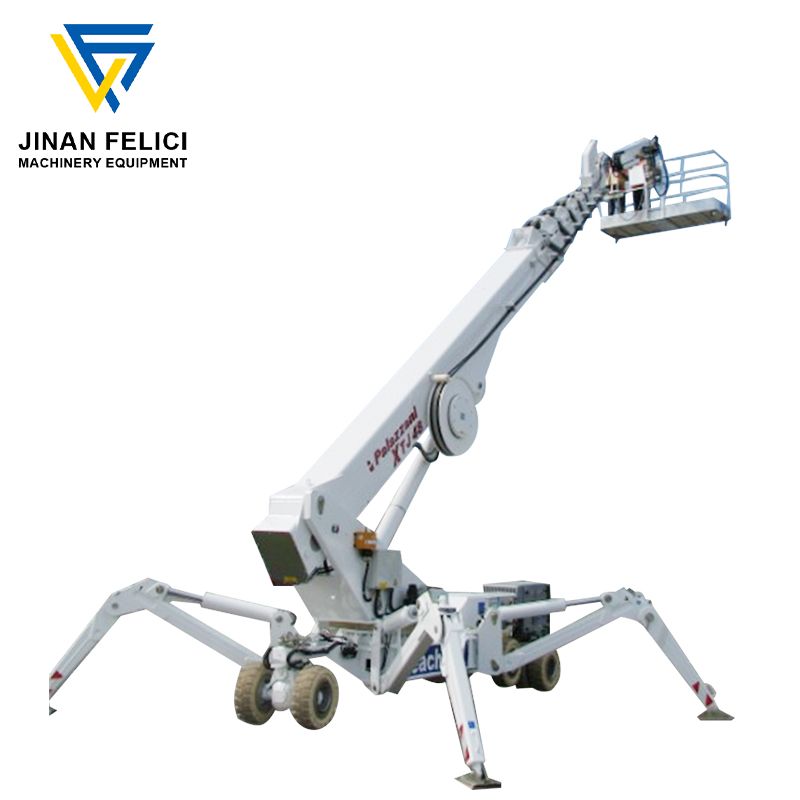What is the difference between a boom lift and a spider lift?
Boom lifts and spider lifts are two distinct types of aerial work platforms that serve similar purposes but differ in their design, capabilities, and applications. Understanding their differences is crucial for selecting the right equipment for specific tasks. Let's delve into the contrasting features of these two aerial platforms.
1. Design and Reach:
Boom Lifts: A boom lift, also known as a cherry picker, features a telescopic or articulating boom that extends vertically and horizontally. These lifts come in various sizes, with reach capabilities ranging from 30 to over 180 feet. They are suitable for accessing elevated work areas that are higher and farther away, making them ideal for construction, maintenance, and repair tasks on tall buildings, utility poles, and other elevated structures.
Spider Lifts: Spider lifts, also referred to as compact or tracked lifts, are characterized by their flexible and compact design. These lifts have multiple folding sections that resemble the legs of a spider, providing excellent maneuverability and versatility. Spider lifts are designed to access confined or hard-to-reach spaces, both indoors and outdoors. They can fit through narrow doorways and tight spaces, making them suitable for tasks like indoor maintenance, tree trimming, and landscaping.

2. Mobility and Terrain:
Boom Lifts: Boom lifts are typically mounted on wheeled or truck-mounted platforms. They are well-suited for relatively flat and stable surfaces such as concrete or pavement. Some models offer 4x4 capabilities for limited off-road terrain, but they are generally better suited for use on smooth surfaces.
Spider Lifts: Crawler Spider Elevator feature a tracked or wheeled undercarriage with outriggers that provide stability on uneven or sloped terrain. This feature allows spider lifts to access challenging locations like hilly landscapes, rough construction sites, or areas with delicate flooring where weight distribution is crucial.
3. Outreach and Articulation:
Boom Lifts: Articulating boom lifts have multiple hinged sections that enable them to reach over obstacles or access hard-to-reach areas. Telescopic boom lifts, on the other hand, offer greater horizontal outreach and are ideal for tasks requiring extended reach.
Spider Lifts: Spider lifts offer versatile articulation due to their multi-section design. Their ability to navigate around obstacles, combined with their compact size, makes them suitable for intricate tasks such as window cleaning, building maintenance, and accessing tight spaces.
4. Weight and Footprint:
Boom Lifts: Boom lifts tend to be larger and heavier than spider lifts. Their increased weight requires stable ground and may limit access to certain locations due to ground pressure restrictions.
Spider Lifts: Spider lifts are designed with a lighter weight and a smaller footprint. This allows them to access areas with weight restrictions, such as elevated floors or fragile surfaces like grass or tiles.
Conclusion:
In summary, the main differences between boom lifts and spider lifts lie in their design, reach capabilities, mobility, and suitability for specific applications. Boom lifts excel in reaching higher and farther locations on stable surfaces, while Felici spider lifts shine in navigating confined spaces, uneven terrain, and delicate environments. The choice between the two depends on the nature of the task, the accessibility of the work area, and the specific requirements of the project at hand.




